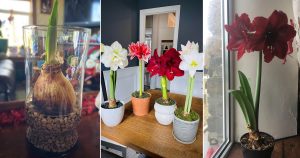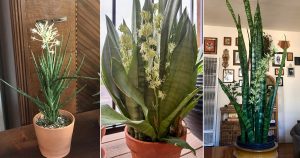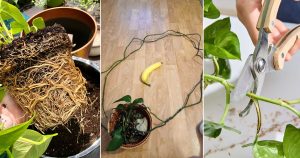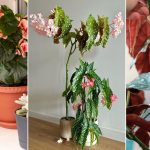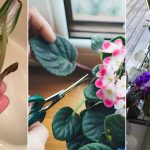When I asked you all for your best tips for gardening kids, several people mentioned that their kids were really excited about growing edible plants. My friend mentioned that her kids particularly like planting seeds where they recognize what the seeds are, like sunflower and pumpkin seeds. Emily mentioned that she always enjoyed growing “big” plants. Well, I know of a great edible plant that has both identifiable seeds and gets pretty big: Corn!
Varieties to Try
Corn is probably one of the most widely hybridized edible plants out there, which means you have a lot of choices when it comes to deciding which to grow. My personal preference is to choose something that either tastes better than what you can get in the store, is a dwarf variety, or that has an interesting color.
Since corn doesn’t need a particularly large pot, the only special consideration for container gardeners is height. Remember that a 6 or 7 foot tall plant is actually 7 or 8 feet off the ground when you take into consideration the height of the container. Plants that are that tall may be outside the reach of almost everyone except tall adults.
- Short Stalks: Strawberry Popcorn, Sweet Spring Treat, Sweet Painted Mountain, Trinity, Chires Baby Sweet
- Fast Growers: Bon Jour, Casino
- Cool, Short Summers: Painted Mountain
- Exceptionally Sweet: Bodacious, Sugar Pearl, Xtra-Tender, Vision
And since this post is particularly focused on kids who might enjoy growing corn, how can I not highlight this variety: Martian Jewels Sweet Corn. What self-respecting kid wouldn’t enjoy growing a variety of corn from Mars?
Most people’s backyard is only big enough to grow one variety of corn. This is even more true if you are growing corn on a balcony. However, the reason is not that corn takes up so much space, because they can be packed in rather tightly. Corn is pollinated by the wind, and most varieties will cross pollinate with each other. The resulting corn will not be what you were expecting, rather you will have created a totally new variety that may or may not taste good. If you really want to try more than one variety, stagger your plantings so that they are not pollinating at the same time. Otherwise, different varieties need to be more than 250 feet apart.
How Much to Grow?
As I mentioned above, corn is pollinated by the wind. As you can imagine, this is a very imprecise process. Nothing would be more disappointing to your kids than to work hard all summer long tending their plants only to find half-developed cobs. To improve your chances of success, I think you should grow at least 12 plants, and grow them very close to each other.
Choosing a Pot
While corn doesn’t need a particularly large pot, the plants get tall, and are prone to getting knocked over by the wind. For this reason, I think its best to buy 20 inch pots and plant three plants (in a triangle) in each pot. The combination of a larger pot and all that extra soil well help keep the corn grounded. Four such pots could easily be accommodated on a 7 foot long balcony.
If your kids enjoy crafts, let them paint/decorate the outside of the pots.
How to Sow
Put your pots into place and then fill them with a good quality potting soil. Mix in a 10-10-10 fertilizer according to the package instructions. It’s best to use an organic fertilizer, especially when kids are doing the work. But remember that even organic fertilizers should be applied with parental supervision.
Plant the corn seeds about 1 inch deep, two to hole, three to a pot (in a triangle). If you’re using a pot that is 24 inches or more in diameter, you can squeeze four plants to a pot, in a square arrangement. Water them in and then keep the soil evenly moist until the seeds sprout. If both seeds in a given spot germinate, pull out one so that there are only three plants growing in each pot.
Where to Grow
Corn needs full sun. And lots of nice warm soil. For these two reasons, the ideal spot is against a wall, in an area that gets 6 or more hours of unobstructed sunlight. Walls tend to retain warmth and then release it back in the evening. Walls often reflect light, which can supplement the light your corn plants will get from the sun.
Watering & Feeding
Corn needs lots of water and fertilizer, which is great for kids, because it means that there is always something to do. While you’re waiting for your seeds to germinate, just keep the soil evenly moist. Once the have sprouted, water the plants once a day in the morning. When the plants get to be about two feet tall, water them in the morning with a water soluble 10-10-10 fertilizer, and then once again in the evening with just regular water.
Harvesting
The best time to pick corn is in the morning or evening when it is cool. The silk on the ears should have turned dark brown, and the ears should be firm. Kernels on the tips of the unhusked ears should be plump and milky. Watch the corn closely because the quality changes fast. Corn is ready about 3 weeks after the tassel grows on top of the corn plant.
Children’s Books About Corn
- Corn Is Maize
- From Kernel to Corncob
- Gimme Cracked Corn and I Will Share
- Raccoons and Ripe Corn
Bonus: Several people mentioned that they enjoyed growing beans as a child. You can easily add beans to a pot with corn by sowing several bean seeds at the base of the corn plants when they are 12 inches tall. Allow the beans to climb up the corn plant. Beans and corn are two of the “Three Sisters,” a combination of plants grown by some Native Americans. The third sister is squash. There is so much history with corn, it is a really great teaching tool in addition to being a lot of fun to grow.

